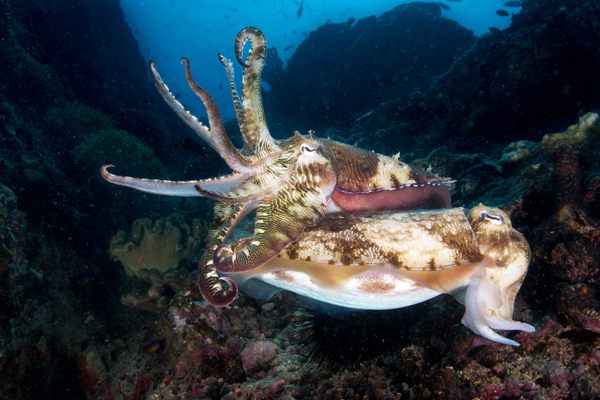Watch Very Old Jellyfish Glide Beneath the Arctic Ice
Life under the ice is long and slow.
Four feet of ice sits atop the Chukchi Sea, several miles from Point Barrow, Alaska. On top, polar bears gambol and walruses loll. What happens beneath the sheet is far more mysterious.
To investigate the goings-on in this underwater realm, Andy Juhl, from Columbia University’s Earth Institute, drilled holes into the ice to insert a small unmanned vehicle carrying a video camera. Over several years, the footage has shown lots of algae, amphipods, and the occasional fish—and also creepy, majestic jellyfish, contracting, expanding, and drifting their way through the teal sea.
It’s hard to get a sense of scale from the video above, but these Chrysaora melanaster jellyfish seen around two minutes into the video is several feet long, with foot-long tentacles trailing below it. This was a surprise, as almost all jellyfish live a few months or less. To become this large, these cnidarians might be several years old—positively ancient in jellyfish terms.
The water they float and feed in is punishingly cold, around 28 degrees Fahrenheit. That chilly Arctic water might be good for their survival, Juhl said in a blog post. When it’s very cold, everything slows down, including the jellyfish’s metabolism, and the ice could shield them from the perils of winter storms. “Life under sea ice is like living in a refrigerator,” he said. It makes everything last longer.






















Follow us on Twitter to get the latest on the world's hidden wonders.
Like us on Facebook to get the latest on the world's hidden wonders.
Follow us on Twitter Like us on Facebook